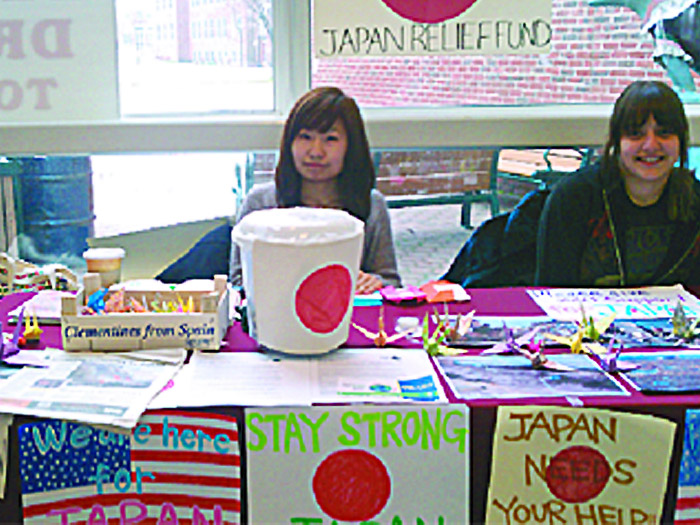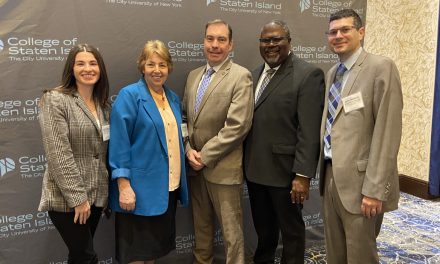
Manami Shirai, left, and a friend raise funds for Japan at their College of Staten Island, New York, last week
The devastating images left in the wake of the 9.0 magnitude earthquake which struck Japan on March 11, will, no doubt, linger in our minds for a very long time. For the Japanese people, however, those images are an everyday reality. Officials say over 10,000 people are confirmed dead, and more than 17,000 are missing. They warn that the final toll can reach almost 20,000. But, what continues to stand out amidst the growing tragedy is the resilient spirit of the Japanese. While engineers still do not know the full extent of damage to the country’s infrastructure— brick by brick, the Japanese have started to rebuild their own communities. With helping hands and willing hearts, they stand together, united to the cause.
Japanese Manami Shirai is living proof that the bond they share is indeed unbreakable. Mere days after the earthquake, Shirai, who’s currently on a one-year exchange programme at New York’s College of Staten Island, began organising fund-raising ventures on campus to help Japan. So far, she’s been able to raise more than US$800. “Japanese people don’t show their stress in front of everybody. They can endure anything. If there is a store, no one will steal from that store. Teenagers are becoming volunteers for the elderly and children. Women and wives cook and share with their neighbours,” said the Ueda-Shi, Nagano native. “Even refugees are helping out.” When the T&T Guardian spoke to the 22-year-old last week, she was in the process of wrapping up yet another fund-raiser which she held in the school’s cafeteria. Officials say it will take up to five years and about 25 trillion yen ($309 billion) to rebuild Japan, but Shirai was happy to help, albeit a little. “Every dollar counts,” she told us. “I know students don’t have a lot of money. If I get $1 I’m glad because any amount of money can help right now.”
Something dark
Although Shirai’s family and close friends have survived the disaster, life continues to be an uphill battle. There are renewed fears of a nuclear crisis and simple necessities like water and food are fast becoming scarce commodities. And then there are the aftershocks—officials say Japan has been jolted by record number of aftershocks since the initial quake. “Everything has changed. My dad said our family restaurant is suffering. Because of the tsunami, fishermen cannot get fresh fish. He says his income is about a quarter of what it once was,” she lamented. “I still can’t imagine that that disaster ever happened in Japan. The number of people who are already dead and still missing is the biggest number in our history. It’s more than World War one and two. “My youngest brother tells me that the atmosphere is not what it used to be. He feels something dark is in his life…”
Need to survive
The Elementary Education major will be back in Japan in July, as her exchange programme comes to an end. She noted that she had “mixed feelings” about returning to her country. “I want to go back to Japan as soon as possible but on the other hand, in Staten Island there are only a few Japanese people and if I leave, there will be less Japanese to spread the word and organise activities to help,” she explained. Still, Shirai remains optimistic that her homeland will recover from this latest adversity. But for now, she’s being practical. “Japan is a country which has helped all other countries for many years. Right now we need help. “I know the smaller countries may not be able to do much but I want to ask developed countries like America and Canada to do a little more to assist us,” she said. “My people are still suffering. They need money for food. They need water. They need electricity and gas. They just need to survive.”
This story originally appeared in the Trinidad & Tobago Guardian Online, and is reprinted here with permission.



![[videos] CSI Student Artwork Brightens Local School Hallways](https://csitoday.com/wp-content/uploads/2016/06/PS3.jpg)













